West Flower Garden Bank
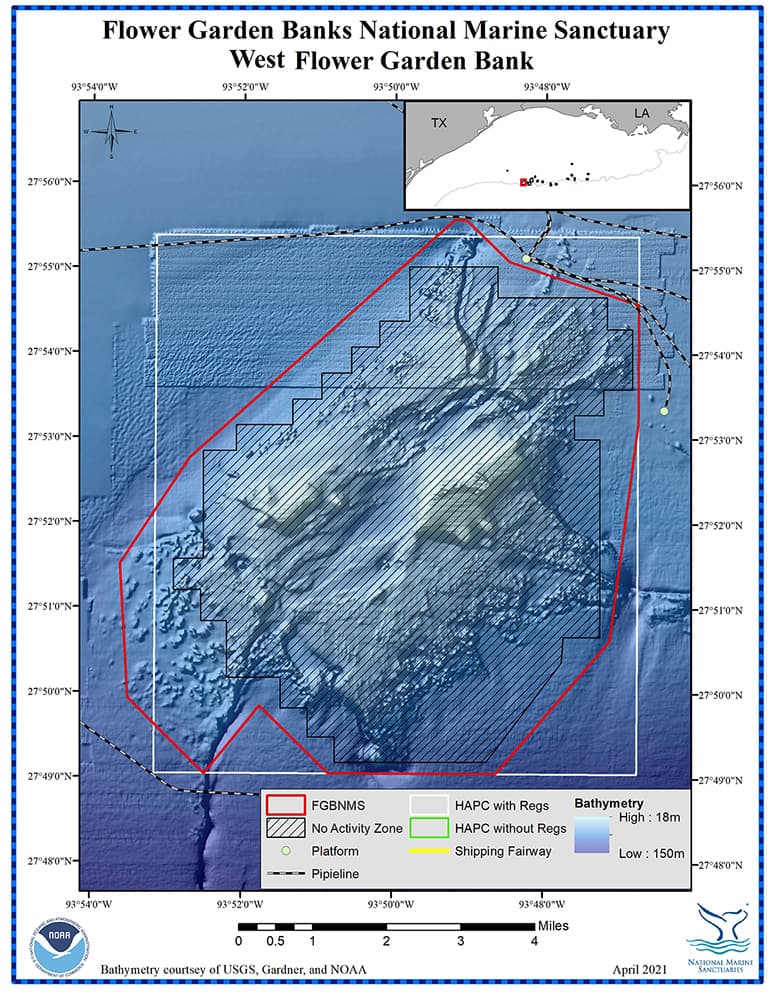
Depth Range: 56-545 feet (17-166 meters)
Distance from Land: 113 miles (182 km)
Area: 37 square miles (96 sq km)
West Flower Garden Bank, with two distinct reef crests and a channel running in between, is located 113 miles (182 km) south of the Texas/Louisiana border and approximately 13 miles west of East Flower Garden Bank. This is one of the two original banks that made up the sanctuary when it was first designated in 1992.
The original boundary for West Flower Garden Bank closely followed the outer edges of the BOEM No-Activity zone, but was later expanded to incorporate additional hard bottom features along the outer edges of the bank.
Coral Reefs
East and West Flower Garden Banks are best known for the beautiful coral reefs located on the shallowest areas of each bank. These are the northernmost coral reefs in the Gulf, thriving at the northern limits of coral survival.
These are also the healthiest coral reefs in the greater Caribbean/Gulf region with over 52% coral cover, which is as much as 5 times the amount of hard coral as other reefs in the region. The corals have literally piled up on one another over thousands of years, creating high profile reefs that rise 15-20 feet (4.6-6.1 meters) above the nearest sand patches in some areas.
The dominant species here are brain and star corals, many of which are considered threatened species (OrbicellaI annularis, Orbicella faveolata, Orbicella franksi). These threatened species account for about 66% of the total coral cover at West Flower Garden Bank.
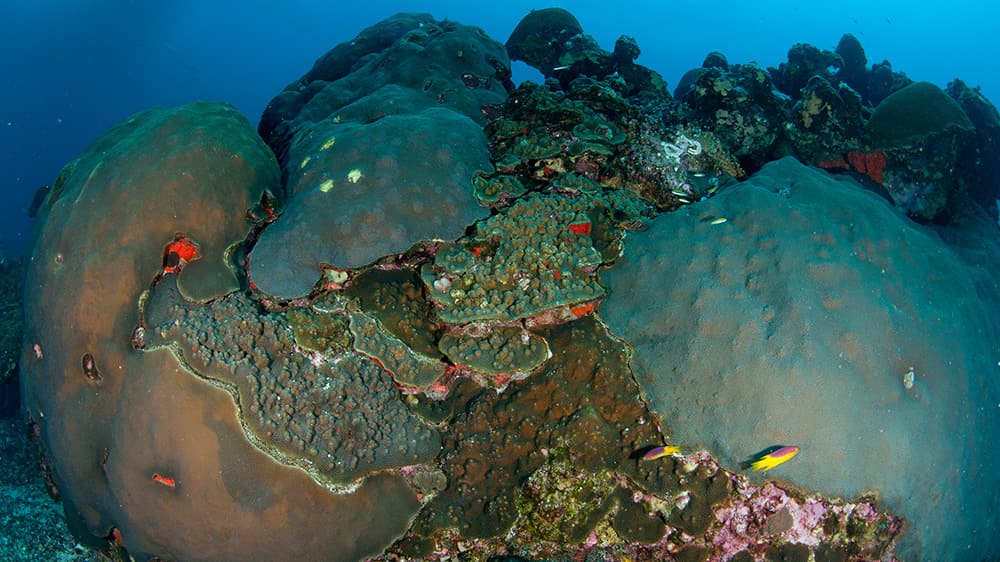
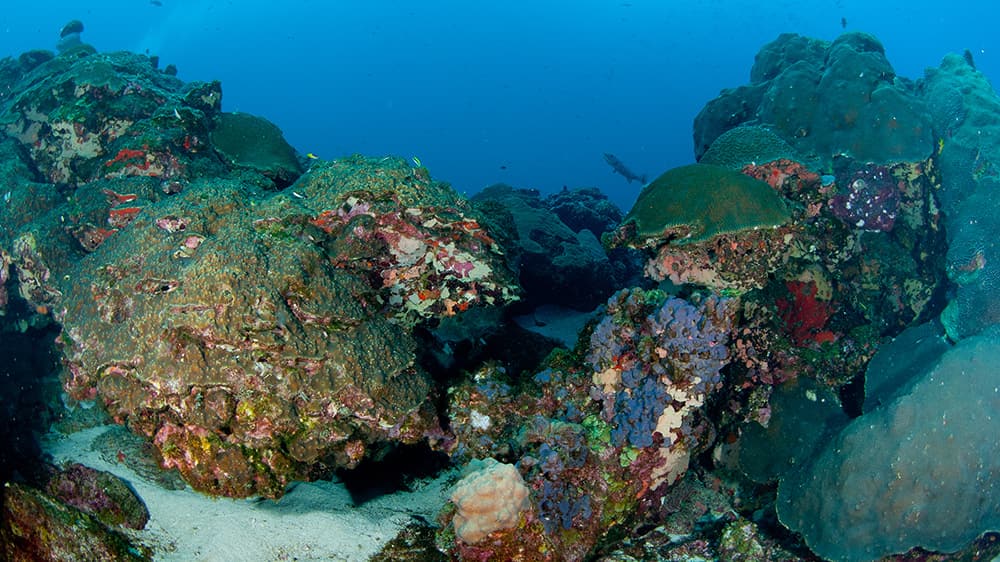
Although the reefs at East and West Flower Garden Banks are often discussed together, they are slightly different. Annual long-term monitoring efforts show slight variations in water temperature, salinity, turbidity, and circulation at West Flower Garden Bank compared to East Flower Garden Bank. There is also a much larger sand patch at the West bank.
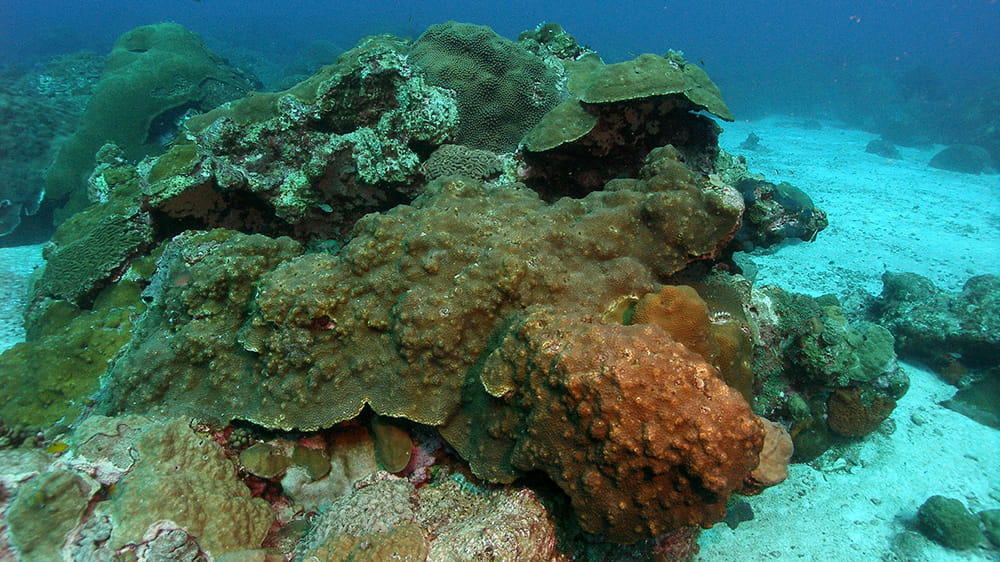
Mesophotic Reefs
Below the reef cap lie deeper mesophotic habitats such as algal nodule zones, and deep coral zones that include populations of stony cup corals, black corals, and octocorals.
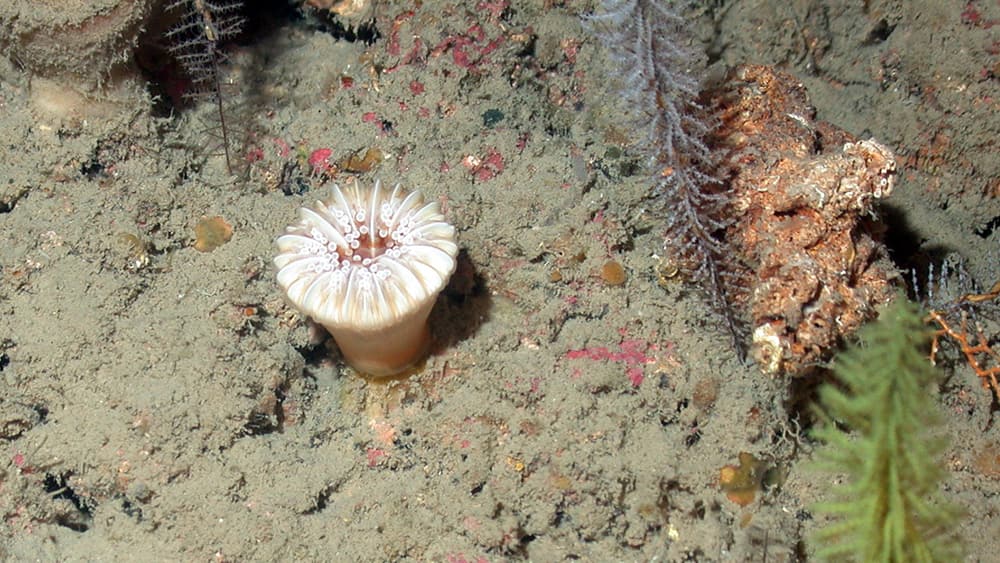
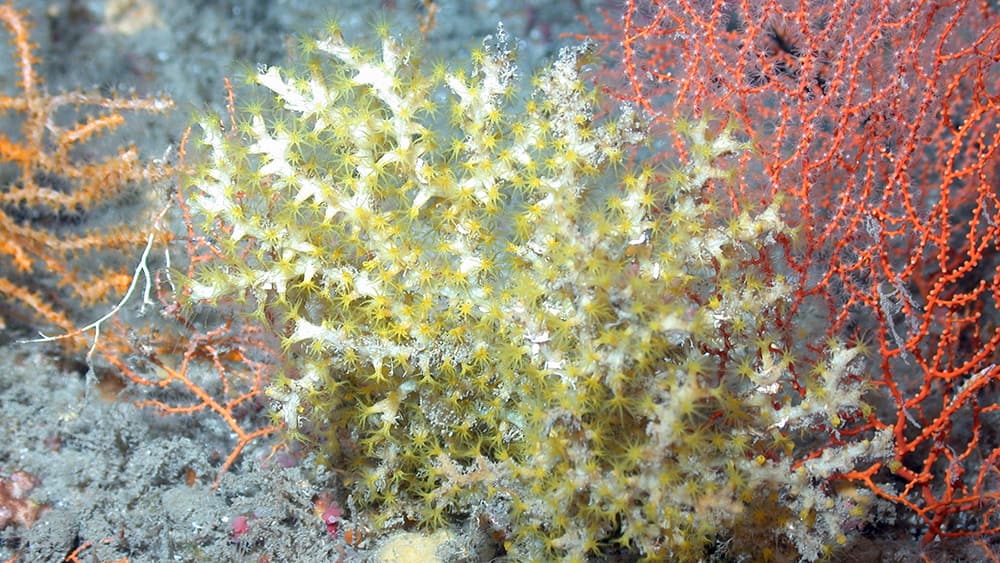
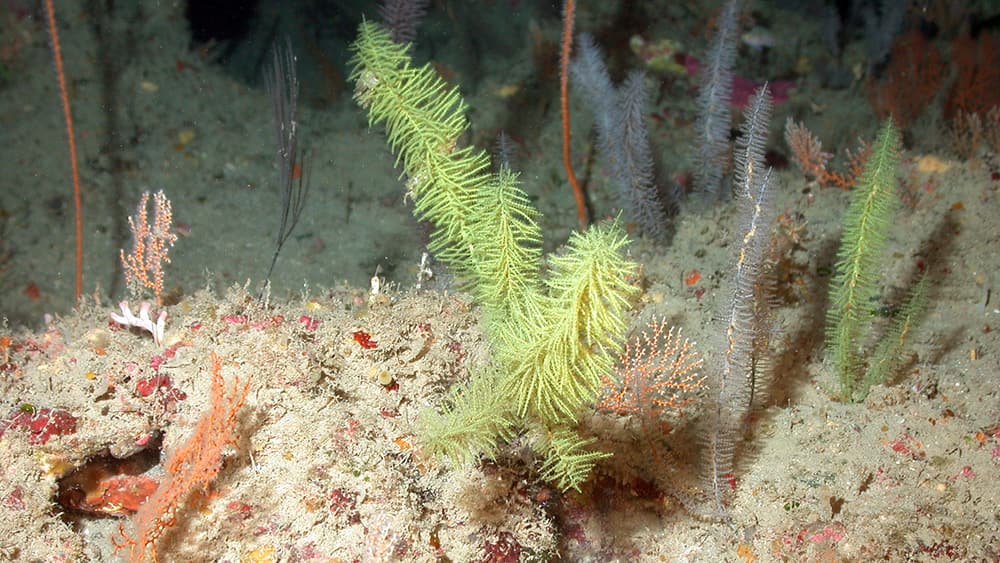
Green and white black corals shaped like bottle brushes are fairly common on the deep reefs of West Flower Garden Bank. Photo: FGBNMS/UNCW-UVP

